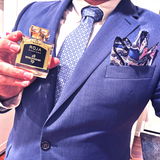I often hear from people speaking at fragrance events and online on perfume trends and I can't understand it if either they are way off or I am. This is more of a rebuke to what I often hear but I would love others opinions on this. So I normally hear people talk about trends in perfume in terms of notes. Vanilla as the center stage note is getting big....or Cherry notes are now trending, or softer citrus notes etc..
To me it seems like the only time a note starts a trend in the industry is when industry defining fragrances hit the market like Aventus and pineapple note becomes big. Another example is middle eastern fragrance houses bringing the Oud note to the larger market.
Otherwise, to me it seems like the only thing that trends are actual fragrance houses. The rise of Jo Malone, or Frederic Malle. Tom Ford as whole starts trending, not so much specific notes in a release from Tom Ford. Maybe a specific note is what drives the upward trend of an entire fragrance house. I realize this forum is biased in that many here can recognize individual notes but the average consumer has no idea what a Gourmand is and likely can only pick out very distinct and common notes.
Am I just way off here? I'm not sure how to conceptualize this but going off what I hear and see, it seems like fragrance house are what trend rather than notes/accords



 Myslf
Myslf Apex
Apex  Absolu Aventus
Absolu Aventus Sauvage Elixir
Sauvage Elixir Baccarat Rouge 540
Baccarat Rouge 540  Spirito Fiorentino
Spirito Fiorentino Aventus
Aventus


 Oud Nude
Oud Nude Queen of Silk
Queen of Silk Hacivat Oud
Hacivat Oud Hacivat
Hacivat The Moon
The Moon